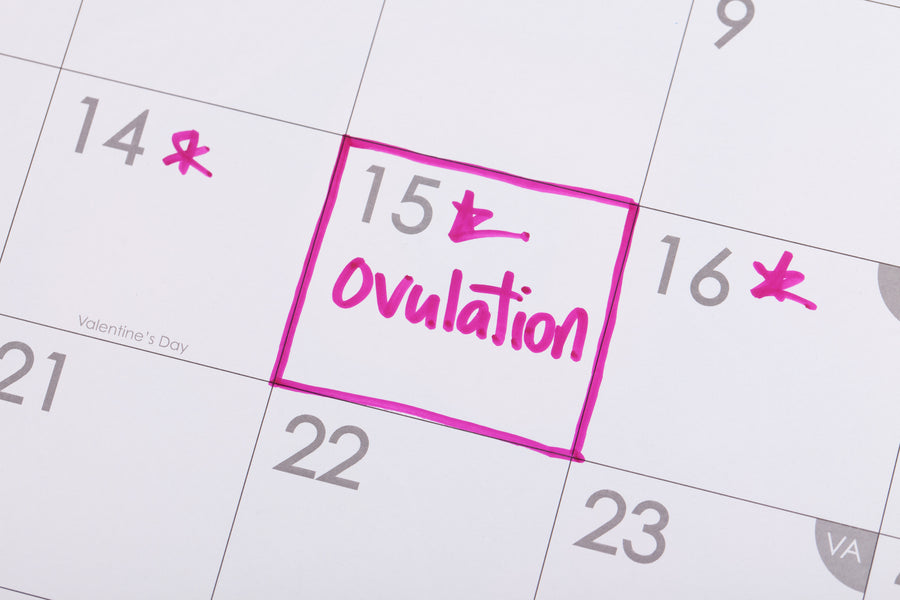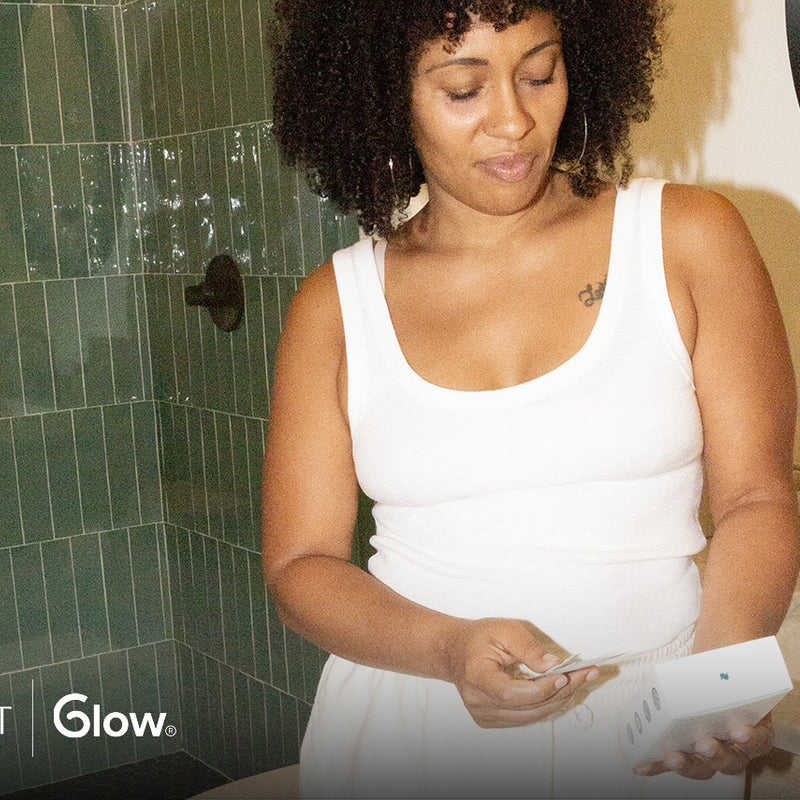How Accurate Are Ovulation Tests? Hint: Very!

Trying to get pregnant? When you're attempting to conceive, timing is everything. The egg is viable for less than 24 hours.[1] After that window, the egg degrades and leaves the fallopian tube. Once this happens, conception can no longer occur during that cycle.
Knowing when ovulation is on the way is essential. Luckily, ovulation predictor kits (OPKs) are here to help. These simple at-home test strips measure hormones in your urine to identify your most fertile period. Best of all, these kits are highly accurate. Modern OPKs can detect even minor hormone shifts.[2]
What Are Ovulation Predictor Kits (OPKs)?
OPKs are easy to use. First, collect a small amount of urine in a clean container. Next, dip a test strip into the urine sample. Some ovulation test strips can be used midstream. You don't have to collect a sample in a separate container. Instead, you can simply perform a test while using the toilet.
The Science Behind OPKs
So, how does ovulation work, exactly? While it might seem confusing, it's a pretty straightforward process.
Each month, your body prepares to release an egg. First, your ovary grows an egg to maturity. The egg develops in a follicle on the outside of your ovary. Once your body decides the egg is ready, a surge of hormones causes the follicle to rupture. The egg passes into the fallopian tube, where it can be fertilized by sperm.[3]
OPKs detect a surge in luteinizing hormone (LH), which tells the body to release the egg. Ovulation usually occurs within 24 hours of a positive urine test result.[4] If you're trying to conceive, plan to have intercourse shortly after your LH peak. This way, sperm will be waiting in the fallopian tubes once the egg is released.[5]
So, How Accurate Are Ovulation Tests?
OPKs are more than 95% accurate when used correctly.[2] However, some users make mistakes with their test strips. These errors can lead to false or confusing results. Take the time to read your kit's instructions before getting started. Natalist's test kits include a detailed instruction booklet to help you perform your test correctly.
Potential Factors Affecting OPK Accuracy
If you're undergoing fertility treatment or hormone replacement therapy (HRT), talk to your healthcare provider. Ask whether your prescription medications could affect your at-home test results.
Above all, be wary of medications that contain human chorionic gonadotrophin (hCG).[5] These drugs help many people become pregnant, but they can also result in a false positive on at-home OPK. If your healthcare provider recommends these medications, they may perform in-office testing to determine when you're ovulating.
Maximizing the Effectiveness of Ovulation Tests
You may have heard that two lines signal a positive result on a pregnancy test, even if the second line is faint. That's usually true for at-home pregnancy tests. But it's not the case for OPKs. Your OPK only delivers a positive result when the second line is as dark or darker than the control line.
When and How to Use Ovulation Tests for Best Results
You can test at any time of day, but you might get the most accurate results if you test first thing in the morning. If you test drinking a lot of fluids, you may dilute the hormones in your urine, and your test may show a false negative.
Most people only need to test once daily. Be sure to read your results within the correct time limits. Reading your results too early or too late can lead to false results.
Understanding Your Cycle
Because the egg is viable for only a short time after ovulation, timing conception can be tricky. Many people struggle to conceive because they've misunderstood their ovulation date. Ovulation calculators can help, but they only provide a rough guess. Your ovulation may occur earlier or later in your cycle.
Your menstrual cycle can be divided into two phases: the follicular phase and the luteal phase. During the follicular phase, your body prepares an egg. After ovulation, your body enters the luteal phase. The fertilized egg burrows into the uterus lining and sends hormone signals that tell your body you're pregnant. If conception doesn't occur, your body tells the uterus to shed its lining.[2] Then, the process starts all over again.
The length of the follicular cycle can vary, but most people have a consistent luteal cycle length.[2] OPKs help you determine the length of your luteal cycle. This information can help you understand when you're fertile and when to expect your next period.
Pros and Cons of Using Ovulation Tests
OPKs can help you understand your menstrual cycle, but they have some drawbacks. Let's explore the pros and cons one by one.
The Benefits of OPKs
OPKs are usually cheaper and more accessible than blood tests. They also provide more concrete results. You may be unsure when ovulation occurs if you try to track your ovulation using physical symptoms. OPKs help clear up any confusion by producing a visible assessment of your body's hormone levels.
Limitations and Considerations
But OPKs aren't for everyone. People with irregular cycles may still have difficulty pinpointing their fertile window. Some users might also have trouble understanding their results.
In rare cases, results can be inconsistent. Some people may notice that their LH levels rise multiple times each month.[6] Sometimes, an LH surge isn't followed by the release of an egg. If your body doesn't ovulate, you can't become pregnant naturally.
If you've been trying to track your cycle for several months without success, it's time to visit your healthcare provider. Many couples try for up to 12 months before successfully conceiving. But if you've been trying for over a year, you may need a fertility checkup.[7]
Discover Natalist Ovulation Tests Today
Natalist offers a variety of ovulation tests, including midstream tests for ease of use. Our products provide accurate, reliable results and are 100% plastic-neutral. Ready to stock up? Check out our bundles and save on our top-selling products.
References:
- Pregnancy: identifying fertile days. MedlinePlus. January 10, 2022. Accessed February 13, 2024. https://medlineplus.gov/ency/article/007015.htm.
- Su H, Yi Y, Wei T, Chang T, Cheng C. Detection of ovulation, a review of currently available methods. Bioengineering & Translational Medicine. 2017;2(3):238-246. doi:10.1002/btm2.10058
- Reed BG. The normal menstrual cycle and the control of ovulation. Endotext. August 5, 2018. Accessed February 13, 2024. https://www.ncbi.nlm.nih.gov/books/NBK279054/.
- Kerin J. Ovulation detection in the human. Clin Reprod Fertil. 1982 Mar;1(1):27-54. PMID: 6821195.
- How to use ovulation kits & fertility monitors. American Pregnancy Association. June 17, 2022. Accessed February 13, 2024. https://americanpregnancy.org/getting-pregnant/infertility/ovulation-kits/.
- Direito A, Bailly S, Mariani A, Ecochard R. Relationships between the luteinizing hormone surge and other characteristics of the menstrual cycle in normally ovulating women. Fertility and Sterility. 2012;99(1). doi:10.1016/j.fertnstert.2012.08.047
- Infertility FAQs. Understanding fertility: the basics. April 26, 2023. Accessed February 13, 2024. https://www.cdc.gov/reproductivehealth/infertility/index.htm.
Reach Out, We're Here
Have questions about your order or products? For the speediest answer, check out our FAQ section. Need something else? Come find us below.
Please keep in mind our regular business hours; Monday-Friday, 9am-5pm CT.
Customer Support
support@natalist.com
Press Inquiries
media@everlyhealth.com
Business & Partnerships
team@natalist.com
Affiliates + Influencers
team@natalist.com
Job Openings
Careers Page
























